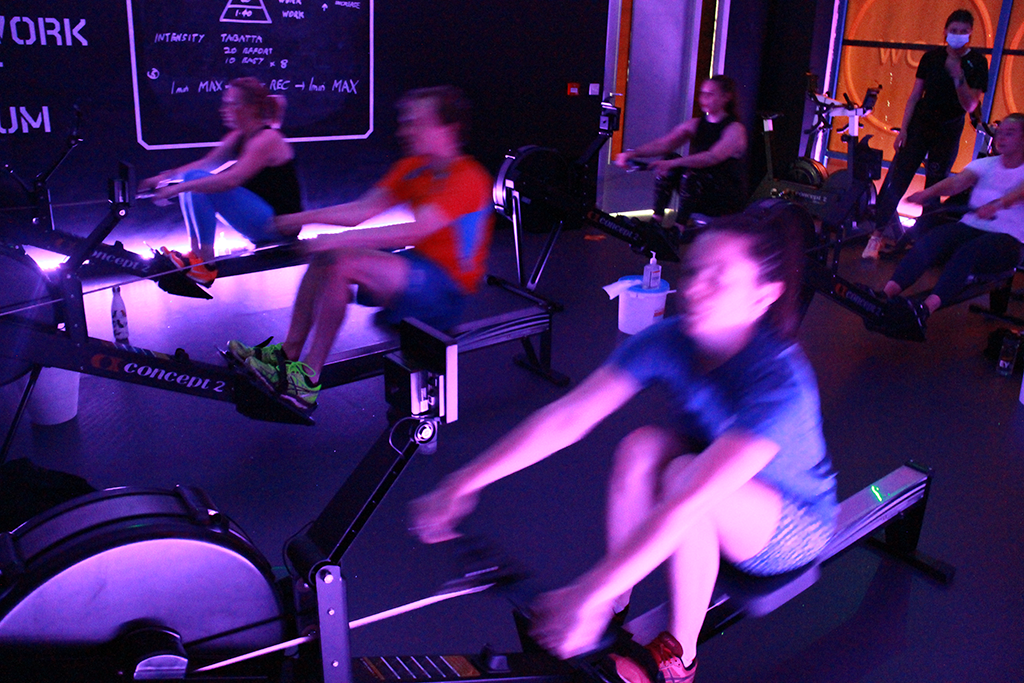If you know, you row..
If you are thinking about a new fitness plan, or you're interested in supplementing your existing exercise routine, there are a lot of reasons you’ll want to try indoor rowing.
ROWING IS A FULL BODY, CALORIE BURNING WORKOUT
I get it. At present for many personal trainers cardio is not fashionable. Counting steps is more popular than more focussed “engine” building workouts. But let me argue the case for perhaps the best piece of cardio equipment out there; the rowing machine. I predict that quite soon rowing machines will be “trending”. Peleton, king of the home cardio workout, are rushing to get a rowing machine to the market. There is fierce competition with other brands trying to convince people that an overpriced rower with a screen the size of a small cinema is the way to go for all their fitness needs. The benefits and drawbacks of exercising at home is another blog. This blog is all about the rower.
The original rowing machine, invented and built by Concept2 has been an innocuous presence for many years in our lives. It is a staple of school and university gyms, community gyms questionable hotel gyms, CrossFit Boxes and other functional fitness boutiques, garages, boat clubs (where it came from). living rooms (mine!) and kitchens (I have seen this!). Despite this, it remains one of the most under used, misunderstood and under the radar pieces of equipment in the history of exercise. It manages both to be incredibly old fashioned and dull as well as dynamic multi-functional and possibly now even trendy. When I worked at a PT over 20 years ago (no joke) it was always my machine of choice with clients. My knowledge of the rower back then was limited to say the least but I instinctively knew it was ideal for structured intervals and building aerobic fitness for my clients.
Believe me if you were castaway on a desert island with 'Wilson', a rowing machine should be your choice of equipment along with a bible and the full work works of Shakespeare obv. In a modern world where so many spend hours “crunched” and tied to a lap top or on a phone for long periods this machine is a defence against this new sedentary consequence of modern living. This, sometimes thought of as 'old fashioned', machine is weaponry for building and improving posterior chain strength and smashing calories. As far as I’m concerned, rowing should be on prescription for modern life.
The main thing we focus on in PedalHouse is slowing people down on the rower. The idea that rowing fast and at a heavy resistance is the biggest mistake people make. The way to row “hard” isn't to go up and down frantically, it’s to learn how to generate force against the resistance, how to recruit as many muscles as possible in this process and crucially how to use these muscle groups in the right sequence. The key to unlocking this is the understanding that the rower is a leg driving or “pushing” machine and not an arm pulling machine. This often feels counter intuitive for people. Most people don't use their legs enough and some people not at all. It is a mistake so often made to assume that being at no 10 on the resistance (or as it is properly called, the damper) and to pull weight using the arms with little or no leg drive will give the hardest workout. Legs, legs, legs first! Elite rowers make amazing cyclists, as the drive phase in rowing is very similar to the cycling movement. In fact there have been athletes who have competed at high levels in both sports. Learning and understanding this leg drive can lead to far better and harder workouts, burning way more energy. The workout can be more endurance based with longer pieces as well as high end anaerobic bursts building strength and power.
The rower has a rhythm. When technique is explained and understood, with practice there is a revelation in finding the 'catch' and 'drive'. This is followed by the 'release' and a slow and controlled return to the machine. This movement is repeated refined and repeated and along with breathing in unison with the body the rhythm is realised. Rowing recruits 85% of the muscles in the human body. In this it is completely different from cycling/running. It's a far more compound movement. The leg drive is the spark, predominantly an explosive quad drive that initiates the force against the resistance, but the glutes are soon activated, and the hamstrings engage in the controlled return. Even the calves are firing throughout the leg drive. Core strength is essential as the upper body has to remain strong and solid in order to transfer the power from lower body into the arms which should always be straight at this point. The torque then is transferred to the upper body as its takes its turn in harnessing the energy. The shoulders and arms are worked, and finally all the major groups in the back finish the stroke and the shoulder blades are pulled together. This will unquestionably be building strength with no damaging impact or stress on your body. My advice is to try and improve your rowing stroke. Legs-body-arms-arms-body-legs and think push not pull. Every stroke say in your head "push". Slow stroke rate work is best place to start. Low 20s. Practice rowing easy for a few mins, then lift your power or pace but keep a low stroke rate then do some intervals but keep your stroke rate again LOW, this is very hard as the temptation is to row faster but restrict yourself to maybe 25/26 stroke rate, but leg drive as hard as you can. This will force you to make a slower return. There’s some great stuff on you tube. Dark horse rowing has some great short videos on technique. But my advice is come to PedalHouse. We're have all levels on the rowing machine. The machines are waiting. Mine is calling me now for a very easy 20min workout...
If you know, you row.

